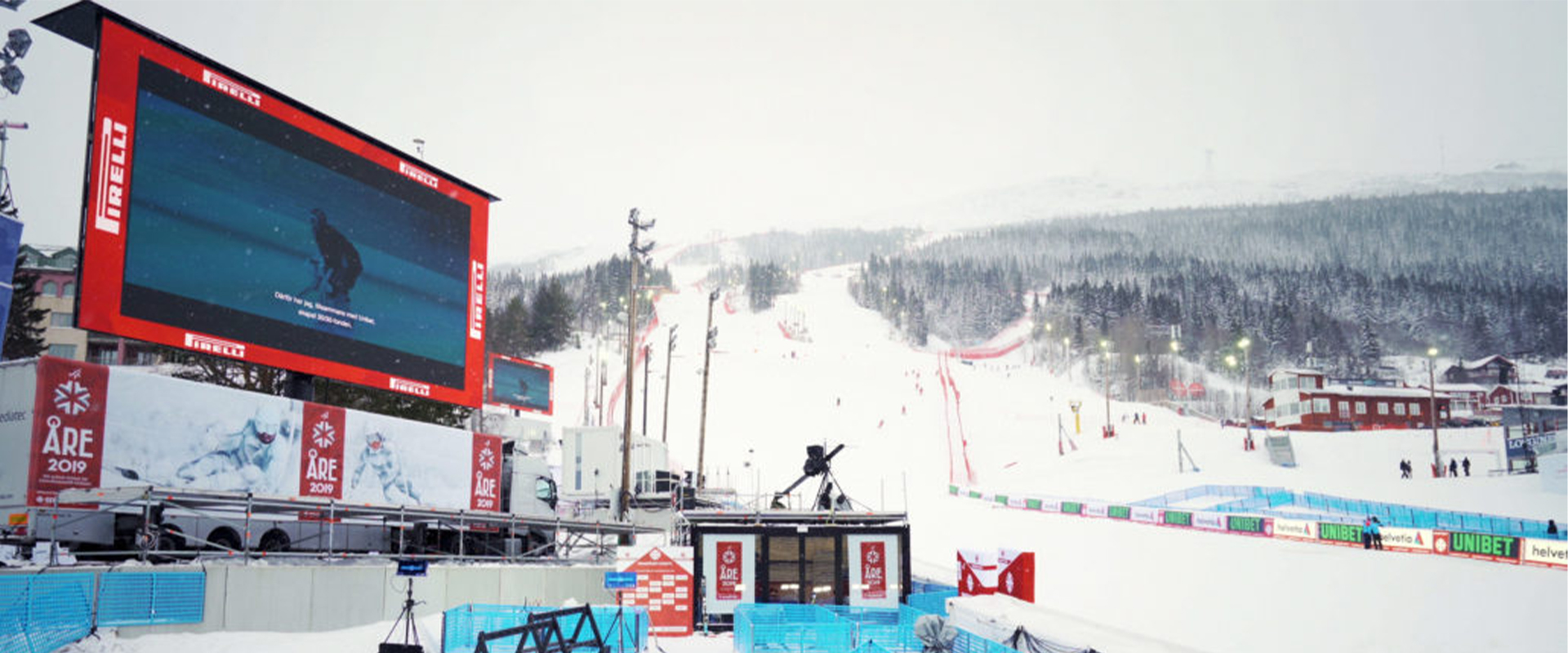LED display is a device that uses light-emitting diodes (LEDs) as light-emitting elements to display graphics, videos, animations and other information through electronic screens. LED display has the advantages of high brightness, low power consumption, long life, wide viewing angle, etc., and is widely used in indoor and outdoor advertising, transportation, sports, cultural entertainment and other fields. In order to ensure the display effect and energy-saving efficiency of the LED display screen, it is necessary to calculate the screen area and brightness reasonably.

1. The method of calculating the screen area of LED display screen
The screen area of the LED display refers to the size of its effective display area, usually in square meters. To calculate the screen area of the LED display, the following parameters need to be known:
1. Dot spacing: the center distance between each pixel and adjacent pixels, usually in millimeters. The smaller the dot pitch, the higher the pixel density, the higher the resolution, the clearer the display effect, but the higher the cost. The dot pitch is generally determined according to the actual application scenario and viewing distance.
2. Module size: each module contains several pixels, which is the basic unit of LED display. Module size is determined by the number of horizontal and vertical pixels, usually in centimeters. For example, a P10 module means that each module has 10 pixels horizontally and vertically, that is, 32×16=512 pixels, and the module size is 32×16×0.1=51.2 square centimeters.
3. Screen size: The entire LED display is spliced by several modules, and its size is determined by the number of horizontal and vertical modules, usually in meters. For example, a P10 full-color screen with a length of 5 meters and a height of 3 meters means that there are 50/0.32=156 modules in the horizontal direction and 30/0.16=187 modules in the vertical direction.
2. The method of calculating the brightness of LED display
The brightness of an LED display refers to the intensity of light it emits under certain conditions, usually in candela per square meter (cd/m2). The higher the brightness, the stronger the light, the higher the contrast, and the stronger the anti-interference ability. The brightness is generally determined according to the actual application environment and viewing angle.

1. The brightness of a single LED lamp: the light intensity emitted by each color LED lamp, usually in millicandela (mcd). The brightness of a single LED lamp is determined by its material, process, current and other factors, and the brightness of LED lamps of different colors is also different. For example, the brightness of red LED lights is generally 800-1000mcd, the brightness of green LED lights is generally 2000-3000mcd, and the brightness of blue LED lights is generally 300-500mcd.
2. The brightness of each pixel: Each pixel is composed of several LED lights of different colors, and the light intensity emitted by it is the sum of the brightness of each color LED light, usually in candela (cd) as the unit. The brightness of each pixel is determined by its composition and proportion, and the brightness of each pixel of different types of LED displays is also different. For example, each pixel of a P16 full-color screen consists of 2 red, 1 green, and 1 blue LED lights. If 800mcd red, 2300mcd green, and 350mcd blue LED lights are used, the brightness of each pixel is (800×2 +2300+350)=4250mcd=4.25cd.
3. The overall brightness of the screen: the light intensity emitted by the entire LED display is the sum of the brightness of all pixels divided by the screen area, usually in candela per square meter (cd/m2) as the unit. The overall brightness of the screen is determined by its resolution, scanning mode, driving current and other factors. Different types of LED display screens have different overall brightness. For example, the resolution per square of a P16 full-color screen is 3906 DOT, and the scanning method is 1/4 scanning, so its theoretical maximum brightness is (4.25×3906/4)=4138.625 cd/m2.

3. Summary
This article introduces the method of calculating the area and brightness of the LED display screen, and gives the corresponding formulas and examples. Through these methods, appropriate LED display parameters can be selected according to actual needs and conditions, and the display effect and energy-saving efficiency can be optimized. Of course, in practical applications, other factors need to be considered, such as the impact of ambient light, temperature and humidity, heat dissipation, etc. on the performance and life of the LED display.
LED display is a beautiful business card in today's society. It can not only display information, but also convey culture, create atmosphere and enhance image. However, in order to get the maximum effect of the LED display, it is necessary to master some basic calculation methods, reasonably design and select the screen area and brightness. Only in this way can we ensure clear display, energy saving, environmental protection, durability and economy.
Post time: Aug-24-2023










